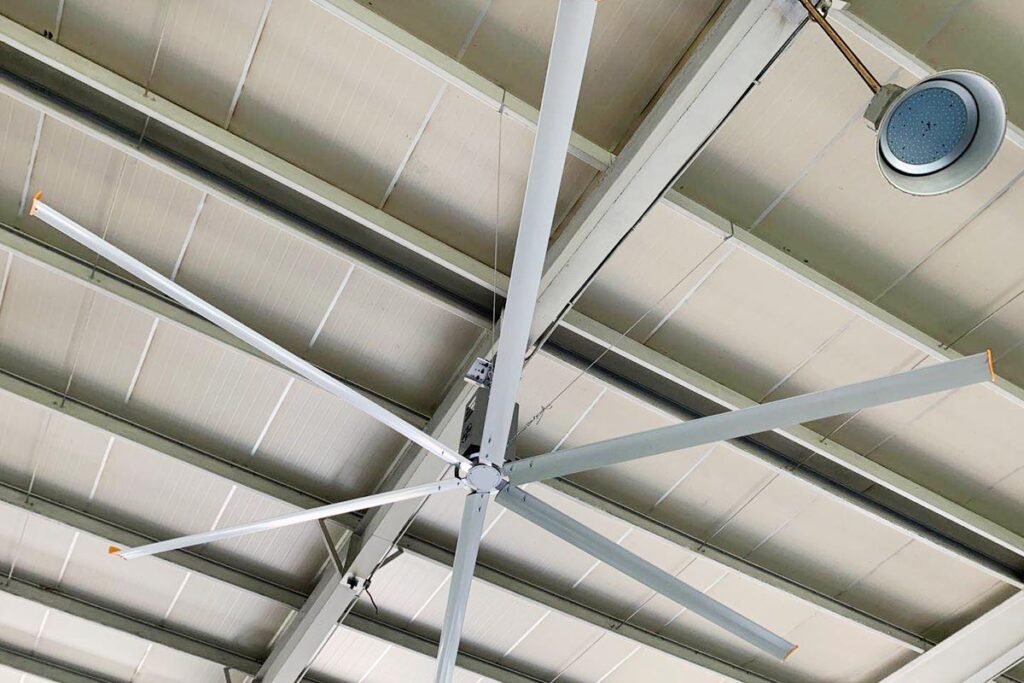
Installing HVLS (High Volume, Low Speed) industrial fans requires consideration of a series of specific architectural requirements to ensure the safety, effective operation of the fans, and the integrity of the building structure. Here are some key architectural requirements and considerations:
1. Load-bearing Capacity
- Structural Strength: The installation location must have sufficient structural strength to support the weight of the fan and the vibrations it generates during operation. This may require an engineering assessment to confirm whether the building structure can withstand these loads.
- Roof or Ceiling Material: The roof or ceiling should be made of materials that can support the weight of the fan, such as reinforced concrete or steel structures, and there should be no cracks or damage in the fan installation area.
2. Installation Space
- Sufficient Installation Height: Fans need enough installation height to ensure that their blades do not come into contact with any obstacles, such as beams, pipes, or other structural elements, when rotating.
- Safety Distance: The installation location of the fan should avoid being too close to other equipment or buildings to prevent collisions or interference when the fan rotates.
3. Electrical Requirements
- Power Supply: There must be an adequate power supply to meet the operational needs of the fan. This may require additional circuits or an upgrade to the existing electrical system.
- Compliant Wires and Outlets: Wires and outlets must comply with relevant electrical safety standards and be able to meet the power requirements of the fan.
4. Safety Measures
- Safety Protection: The installation location should have appropriate safety measures, such as protective nets or barriers, to prevent people or objects from entering the fan’s rotating area.
- Emergency Stop Switch: An emergency stop switch should be installed in an easily accessible location to quickly cut off the fan’s power supply in case of an emergency.
5. Maintenance and Inspection
- Accessibility: The installation location of the fan should facilitate routine maintenance and inspection work, including cleaning, lubrication, and replacement of parts.
- Maintenance Platform or Passage: A dedicated maintenance platform or passage may be required to safely access the fan for maintenance work.
6. Regulations and Standards
- Compliance with Regulations: The installation work must comply with local building regulations, safety standards, and the manufacturer’s installation guidelines.
- Technical Specifications: According to national standards such as “JB/T 13889-2020 Industrial Ceiling Fan Technical Conditions,” ensure that the installation and use of the fan meet the specified technical conditions.
7. Environmental Factors
- Temperature and Humidity: The temperature and humidity of the installation environment should be within the fan’s designed operating range to ensure its long-term stable operation.
- Wind and Rain Protection: If the fan is installed outdoors or in a semi-outdoor environment, wind and rain protection measures should be considered to ensure the fan can operate normally in adverse weather conditions.
In summary, the installation of HVLS industrial fans requires a comprehensive consideration of factors such as building structure, electrical systems, safety protection, maintenance convenience, and regulatory standards to ensure the effective operation and safe use of the fans.
